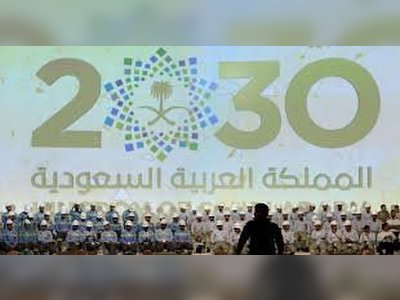
Rising Palestinian Star "Hamas" in Lebanon With the Backing of "Hezbollah
Hamas's Position Shifts Significantly After "The Al-Aqsa Flood Operation".
Following Israel's announcement on Saturday that its operation in the Lebanese area of Jdeideh, which lies outside the conflict zone with "Hezbollah", aimed to assassinate Hamas leader Bassel Al-Saleh, in charge of recruiting in the West Bank, questions about the political and military movement's status inside Lebanon have resurfaced. This comes after a complete turnaround since the "Al-Aqsa Flood Operation" last October.
While Hamas's presence in Lebanon was confined to media activities, cultural events, and mass mobilization for many years, it began to ascend in security and military significance following an explosion in December 2022 at the Burj al-Shamali camp. At the time, it was suggested that a fire had started in a diesel storage site, which then spread to an ammunition store belonging to Hamas, a claim which the movement denied, referring to electrical friction in a storage area of COVID-19 protective equipment instead.
No military or security operations by the movement were recorded except within the framework of the joint security force in the "Ain al-Hilweh" Palestinian refugee camp in southern Lebanon. However, with the "Al-Aqsa Flood Operation" and Hezbollah's transformation of southern Lebanon into a support front for Gaza, the situation completely flipped. This led to the entry of "Al-Qassam Brigades", the military wing of the movement, along with other armed groups, into carrying out military operations and launching rockets from Lebanese territory, albeit under the supervision and control of Hezbollah. It was apparent that most of these groups, especially Hamas, reduced their operations and confined themselves to the party's jurisdiction.
After the assassination of Hamas Deputy Chief Saleh Al-Arouri in early January in Beirut's southern suburb, a Hezbollah stronghold, it was clear that the movement has made Lebanon a primary base for its political activities. Notably, Hamas's security and military presence has grown in Lebanon following the Syrian crisis and its significant fallout with the Syrian regime, leading to the dispersion of its political leaders among Doha and Turkey and the relocation of its security and military figures to Lebanon, particularly in the Saida region and some camps, but mainly in Beirut's southern suburb, which is assumed to be a safe haven for them.
Lebanon as a Platform for Hamas
According to the Shiite dissident Ali Al-Amin, "Lebanon forms a political, media, and to an extent a military platform for Hamas. It provides a space for its leaders under the protection of Hezbollah, and it is almost the only place outside Gaza where its leaders can hold press conferences without facing official objections. However, Israeli targeting of Hamas leaders and the assassination of Saleh Al-Arouri in Beirut nearly two months ago pose an obstacle to the idea of Lebanon becoming a refuge for the movement's leaders."
Palestinian researcher Hisham Dibsi agrees that "Lebanon is now, specifically, a political, media, and military field for Hamas, a development not previously present. The use of the Lebanese arena has escalated since the announcement of the 'unity of arenas' principle and the joint operations room and with the 'Al-Aqsa Flood Operation', where the movement for the first time exceeds political and media activity to engage in military operations." In a statement to "Asharq Al-Awsat," he pointed out that "this peaked with the announcement of forming the 'Vanguards of the Al-Aqsa Flood', a new militia capitalizing on the events in Gaza. Yet the Palestinian and Lebanese reaction made them scale back this formation. However, independent military activity for the movement in Lebanon would not be possible without the consent of Hezbollah and the facilitation they provide."
Al-Amin discusses several dimensions to Hamas's military aspect in Lebanon for "Asharq Al-Awsat", pointing out that "the first dimension is connected to imposing its control over Palestinian camps, which is and has always been on its agenda under Hezbollah's supervision. The second dimension is related to carrying out military operations against Israel, which has been openly active since the 'Al-Aqsa Flood Operation', but has since ceased, due to Hezbollah's calculations, which appears to have been the reason behind stopping the military activity of Hamas and Islamic Jihad."
In December, Hamas decided to establish a new formation called "The Vanguards of the Al-Aqsa Flood" in an effort to capitalize on the war in Gaza by increasing its popularity in the Palestinian camps and reinforcing its presence and role at the expense of the Fatah movement, which has long been considered the most prominent Palestinian faction in Lebanon.
Weak Security Incubation
Al-Amin points to an increased Palestinian public sympathy for the movement after the "Al-Aqsa Flood Operation", and to some extent the Lebanese sentiment, allowing Hamas to operate smoothly within the camps and within the Lebanese Sunni environment. It exceeded the size and presence before the operation.
Al-Amin notes that "Hamas's primary presence is inside the camps, but most of its leaders in Lebanon are located in areas under Hezbollah's security jurisdiction. Israeli targeting did not affect this presence but affected the movement's opportunities to expand within Lebanese soil, ending the chance for leaders from Qatar or Turkey to seek refuge in Lebanon due to the weak security incubation there and Israel's capacity to target them."
Dibsi refers to "the fundamental presence of the movement, whether political or military, inside Palestinian camps, a classic existence that has not changed after the 'Al-Aqsa Flood Operation', although there are some logistical centers agreed upon with Hezbollah outside the camps. There is also a presence of some cadres in the suburbs or elsewhere, but the ongoing strikes against these leaders since the assassination of Al-Arouri confirm that there is no safety for cadres or centers outside the camps."
While Hamas's presence in Lebanon was confined to media activities, cultural events, and mass mobilization for many years, it began to ascend in security and military significance following an explosion in December 2022 at the Burj al-Shamali camp. At the time, it was suggested that a fire had started in a diesel storage site, which then spread to an ammunition store belonging to Hamas, a claim which the movement denied, referring to electrical friction in a storage area of COVID-19 protective equipment instead.
No military or security operations by the movement were recorded except within the framework of the joint security force in the "Ain al-Hilweh" Palestinian refugee camp in southern Lebanon. However, with the "Al-Aqsa Flood Operation" and Hezbollah's transformation of southern Lebanon into a support front for Gaza, the situation completely flipped. This led to the entry of "Al-Qassam Brigades", the military wing of the movement, along with other armed groups, into carrying out military operations and launching rockets from Lebanese territory, albeit under the supervision and control of Hezbollah. It was apparent that most of these groups, especially Hamas, reduced their operations and confined themselves to the party's jurisdiction.
After the assassination of Hamas Deputy Chief Saleh Al-Arouri in early January in Beirut's southern suburb, a Hezbollah stronghold, it was clear that the movement has made Lebanon a primary base for its political activities. Notably, Hamas's security and military presence has grown in Lebanon following the Syrian crisis and its significant fallout with the Syrian regime, leading to the dispersion of its political leaders among Doha and Turkey and the relocation of its security and military figures to Lebanon, particularly in the Saida region and some camps, but mainly in Beirut's southern suburb, which is assumed to be a safe haven for them.
Lebanon as a Platform for Hamas
According to the Shiite dissident Ali Al-Amin, "Lebanon forms a political, media, and to an extent a military platform for Hamas. It provides a space for its leaders under the protection of Hezbollah, and it is almost the only place outside Gaza where its leaders can hold press conferences without facing official objections. However, Israeli targeting of Hamas leaders and the assassination of Saleh Al-Arouri in Beirut nearly two months ago pose an obstacle to the idea of Lebanon becoming a refuge for the movement's leaders."
Palestinian researcher Hisham Dibsi agrees that "Lebanon is now, specifically, a political, media, and military field for Hamas, a development not previously present. The use of the Lebanese arena has escalated since the announcement of the 'unity of arenas' principle and the joint operations room and with the 'Al-Aqsa Flood Operation', where the movement for the first time exceeds political and media activity to engage in military operations." In a statement to "Asharq Al-Awsat," he pointed out that "this peaked with the announcement of forming the 'Vanguards of the Al-Aqsa Flood', a new militia capitalizing on the events in Gaza. Yet the Palestinian and Lebanese reaction made them scale back this formation. However, independent military activity for the movement in Lebanon would not be possible without the consent of Hezbollah and the facilitation they provide."
Al-Amin discusses several dimensions to Hamas's military aspect in Lebanon for "Asharq Al-Awsat", pointing out that "the first dimension is connected to imposing its control over Palestinian camps, which is and has always been on its agenda under Hezbollah's supervision. The second dimension is related to carrying out military operations against Israel, which has been openly active since the 'Al-Aqsa Flood Operation', but has since ceased, due to Hezbollah's calculations, which appears to have been the reason behind stopping the military activity of Hamas and Islamic Jihad."
In December, Hamas decided to establish a new formation called "The Vanguards of the Al-Aqsa Flood" in an effort to capitalize on the war in Gaza by increasing its popularity in the Palestinian camps and reinforcing its presence and role at the expense of the Fatah movement, which has long been considered the most prominent Palestinian faction in Lebanon.
Weak Security Incubation
Al-Amin points to an increased Palestinian public sympathy for the movement after the "Al-Aqsa Flood Operation", and to some extent the Lebanese sentiment, allowing Hamas to operate smoothly within the camps and within the Lebanese Sunni environment. It exceeded the size and presence before the operation.
Al-Amin notes that "Hamas's primary presence is inside the camps, but most of its leaders in Lebanon are located in areas under Hezbollah's security jurisdiction. Israeli targeting did not affect this presence but affected the movement's opportunities to expand within Lebanese soil, ending the chance for leaders from Qatar or Turkey to seek refuge in Lebanon due to the weak security incubation there and Israel's capacity to target them."
Dibsi refers to "the fundamental presence of the movement, whether political or military, inside Palestinian camps, a classic existence that has not changed after the 'Al-Aqsa Flood Operation', although there are some logistical centers agreed upon with Hezbollah outside the camps. There is also a presence of some cadres in the suburbs or elsewhere, but the ongoing strikes against these leaders since the assassination of Al-Arouri confirm that there is no safety for cadres or centers outside the camps."











